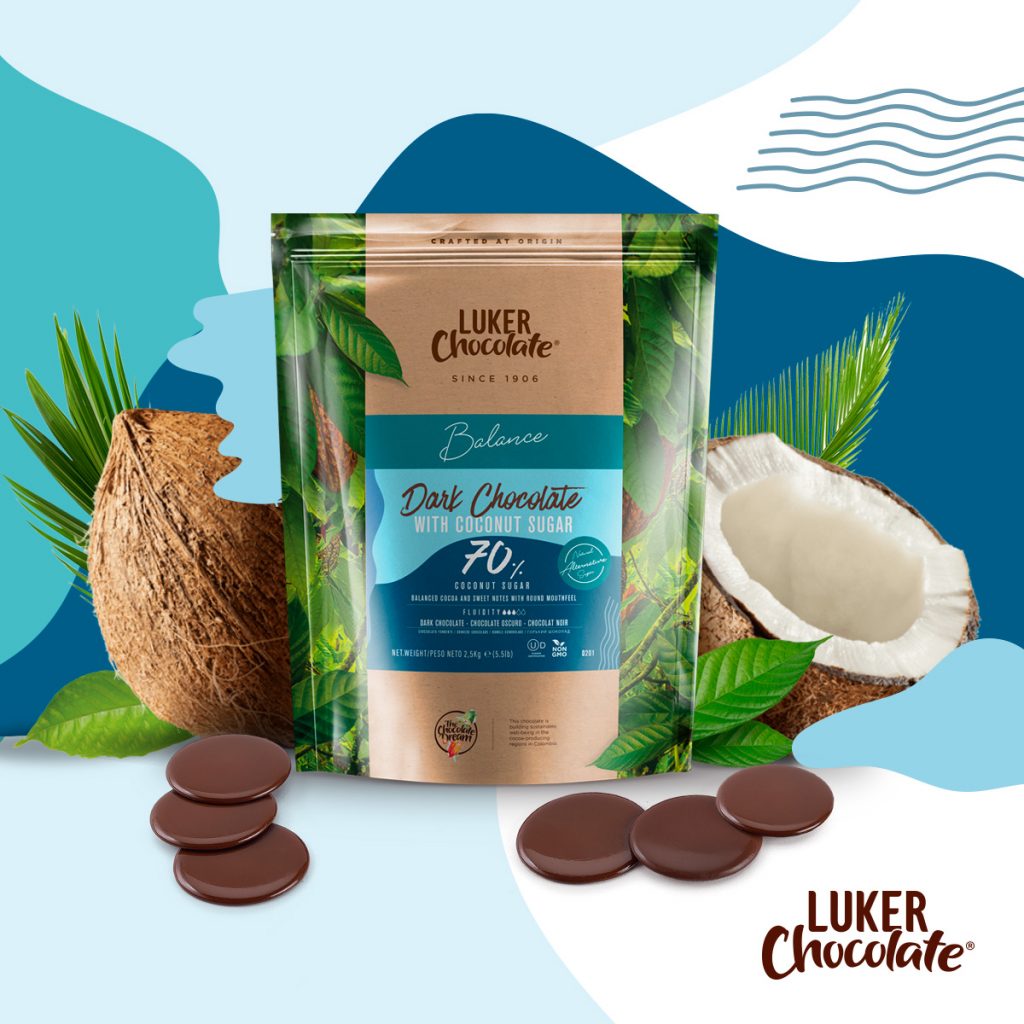| Refreshed and republished on June 29th, 2023 |
| This post was originally published on July 25th, 2022 has been enhanced and updated for accuracy and comprehensiveness. |
The conversation surrounding alternatives to regular sugar continues. We know there’s a new kind of health-conscious consumer out there.
The chocolate & confectionery industry faces a challenge in producing products sweetened with natural alternatives to sugar or sweeteners without sacrificing taste.
How can they meet the demand for healthier options? 👇🏽
Read on or navigate this quick menu to find the solution for your health-conscious customers:
- Innovative chocolate formulations to meet the needs of growing markets.
- Natural Sugars For Chocolate Products.
- Sugar-Free for Chocolate & Snacks

Innovative chocolate formulations to meet the needs of growing markets.
The general consumption of foods that are beneficial to health is always subject to the context of the local diet and lifestyle (whether healthy or sedentary) of an individual. For instance, one may benefit from consuming chocolate with sugar alternatives due to fewer calories. Whereas another person may be more focused on the benefits of cavity prevention.
Overall, the language surrounding health benefits must always be contextualized to avoid any misunderstandings. A person who is sedentary or who does not have a balanced diet for example, will not see any caloric effect even if they eat sugar-free chocolate. However, there are alternatives that allow a “healthier” consumption of chocolate.

One of the ways to talk about better chocolate consumption is not only to think about alternative straightforwardly but also about the formulation. This journey involves a comprehensive understanding of each ingredient, the process of combining them, and the roles they play in achieving that signature flavor.
The name of the game is getting an evolution of formulation that preserves the taste while promoting well-being.
Frankly speaking, it’s like finding a needle in a haystack. But we like to defy the odds in the name of chocolate.
Variety is the key to the taste.
There are formulations that could hit into a similar product positioning category.
Chocolate with a higher cocoa content is associated with several health benefits. This is because having a higher percentage of cocoa provides our body with more natural antioxidants and other micronutrients that characterize cocoa and chocolate, such as magnesium, iron, and zinc. Eating chocolate will always be better for you if its consumption per portion has a lower caloric intake compared to its counterpart.
| 🔮Key Product Fact: A 70% chocolate sweetened with erythritol and stevia will have fewer calories than a 70% sweetened counterpart chocolate with refined sugar. It is important to know that these sugar alternatives do not seek to make a “zero-calorie” product since this is impossible. But, the objective itself is to obtain chocolate with less caloric intake than its counterparts without losing indulgence. |
To achieve a perfect balance between mouthfeel and a healthier chocolate profile, when developing a product, we seek to balance existing ingredients. For example, our team will take advantage of the textural benefits offered by cocoa butter to balance attributes such as “creaminess” or “melting speed”. In addition to this formulation engineering type, we contemplate using other ingredients, such as inulin. Inulin is a fiber with prebiotic properties that aid the functioning of the digestive tract. It also helps us to achieve that “balanced mouthfeel,” reducing other effects such as the “refreshing” sensation that some polyols usually leave.
Natural Sugars For Chocolate Products
In the ever-evolving confectionery landscape, a discernible trend has begun to emerge, particularly within the United States: a growing preference for natural sugars in chocolate products. While this shift away from refined sugars is still in its nascent stages, it’s a noteworthy development that shows promise of altering the traditionally mass-produced, heavily processed chocolate market. The burgeoning interest in more wholesome, ‘real’ ingredients hints at an intriguing new chapter in the world of confectionery.
Consumers are gradually showing an inclination towards natural sugars—those derived directly from plants and fruits without undergoing an extensive refining process. Today’s informed consumers demand more transparency in their food, favoring ingredients they can pronounce and recognize. Subsequently, natural sweeteners such as raw honey, raw cane, maple syrup, and coconut sugar , among others, are gaining momentum as an ingredient that fits into healthier categories. These natural sugars carry a less processed image and often come with added nutritional benefits, such as essential minerals and antioxidants.
The subtle shift towards natural sugars in chocolate products extends beyond health considerations and delves into the realm of taste. The variety of natural sugars available today introduces a range of flavors that can enhance the overall sensory experience of chocolate. This potential for new taste dimensions sparks curiosity among consumers, creating a demand that chocolatiers and manufacturers are keen to meet. As such, the growing preference for natural sugars presents an exciting opportunity in the chocolate industry.

When we talk about consumption tendencies, Luker is at the forefront of change thanks to the tools we use. Digitization, and even the growing expansion of the “metaverse”, allows us to stay informed and see the changing dynamics in chocolate consumption patterns.
Whilst all generations can agree on the enjoyment and indulgence chocolate provides, more consumers want to experience this whilst being conscious of the planet and their bodies. In 2022/23 global sugar production was the lowest it has been in three years and the global sugar substitute’s market is expected to grow at a compound annual growth rate (CAGR) of 5.6% from 2022 to 2032. This has constituted a central challenge for the industry to remain innovative and develop new products.
Keeping ahead of the trends, we invite you to learn more about our natural sugar alternatives and our Balance portfolio.
<BROWSE RAW CANE SUGAR ALTERNATIVES>
Sugar-Free for Chocolate & Snacks
The “sugar-free” claim is subject to regulatory standards. It implies that in the designed product, no amount of sugars or other ingredients containing sugars that functionally replace added sugars have been added during processing or packaging.
Within the framework of this definition, we have developed couvertures that are “sugar-free” such as Dark Chocolate Cumbre 58%, Dark Chocolate 70% Erythritol+Stevia, and Dark Chocolate 70% Allulose.
Furthermore, when the milk ingredient is added to a formulation, the milk naturally has sugars (such as lactose) and therefore the manufactured product cannot be called “sugar-free” but instead, “without added sugar”.
Within this category, we have Milk chocolate Mulata 37% with no added sugar, Milk chocolate 40% Erythritol Stevia and Oat M!lk 43% Erythritol Stevia (oats also provide natural sugars). These formulations have been born from co-creative processes to solve market and customer needs.
You may also want to read:


 Share
Share
 Tweet
Tweet
 Share
Share


